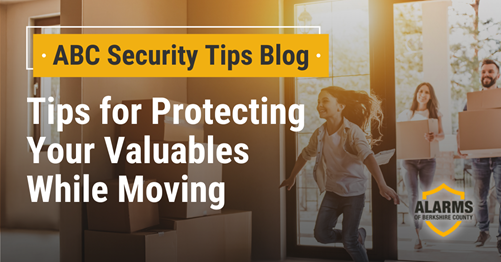Tips for Protecting Your Valuables While Moving
Posted on
If you’re thinking of moving, you’re not alone! Americans have been relocating in record numbers, with the majority fleeing large, densely populated cities and seeking a lower cost of living, an improved quality of life, and more space for their families. However, the move itself—usually a time of distraction, stress, and loosely controlled chaos—can be risky for your possessions and valuables. Here’s how to make sure your things are protected.
Pack Carefully

It almost goes without saying—but packing with extra care goes a long way in protecting your valuables. Packing up your entire home is overwhelming, and it may be tempting to toss items at random into overly stuffed boxes just to make headway. Instead, make a list of the items which need the most protection: fine china, fragile electronics, art, mirrors, etc. Give yourself plenty of time to pack these items (enlist the help of a friend or hire a professional, if needed), and make sure you have protective packing materials (like bubble wrap or packing peanuts) on hand.
When it’s time to box things up, invest in at least a few new cardboard boxes to ensure they’ll hold up. While there are plenty of free boxes to be had in most communities, these may be less sturdy if they’re old or very worn, or if they’ve been stored in a damp area. And while large boxes can be useful for clothing and other lightweight items, remember that bigger isn’t always better. Avoid breaking and losing valuables by packing them in smaller boxes.
Take an Inventory
As you pack, it’s also wise to take inventory. Use a digital camera or cellphone to take pictures of valuables as you place them in their boxes. Later, you can double-check these to ensure items weren’t overlooked, or to compare if you believe an item was damaged during the move.
A Smarter Way to Label
Instead of labeling boxes by contents, mark them with which room they belong in. If there is an opportunity for theft on moving day, a box labeled “living room” will be less appealing than one labeled “electronics.” Don’t forget to mark a box “fragile” when needed, as well.
Keep Valuables to Yourself
Your most treasured belongings don’t belong on the moving truck. Expensive or heirloom jewelry, collectibles, credit cards, passports, and all important documents should be kept with you during the move; pack these separately for transport in your own car. You could reduce moving day worries even further by keeping valuables off-site altogether: deposit them in a safety deposit box at the bank, or leave them with a trusted friend or relative.
Choosing & Using a Moving Company
Hiring movers can make relocating much easier, but it’s important to find a professional company that you trust. Vet your local companies carefully, and ask acquaintances for their personal recommendations. Make sure any company you consider is fully licensed, and get specific details on what they’ll assist with—some can handle the entire move from packing to un-packing, but others may provide only loading and un-loading.
Once you’ve hired a company, make sure everyone is on the same page. set up a specific plan with them to avoid misunderstandings and mistaken identities on moving day. Even if you prefer to be more hands-off, make sure you know how many movers (& trucks) are on your team, and what they look like or how they can be identified. This way, you can be aware of potential thieves who may pose as movers.
Cover All Your Bases
On moving day, ask your movers or helpers to take items from your old home directly into their vehicles, and then directly into your new home. If items are first unloaded onto the sidewalk or the lawn, there’s a greater opportunity for theft, and a larger chance that things may get accidentally left behind.
If you’ll be inside cleaning and unpacking, you may also want to assign a point person to oversee the un-loading process outside. This person can ensure that your door isn’t left wide open, that the moving truck isn’t left unattended while open, and that any items that do need to be left outside aren’t unguarded.
